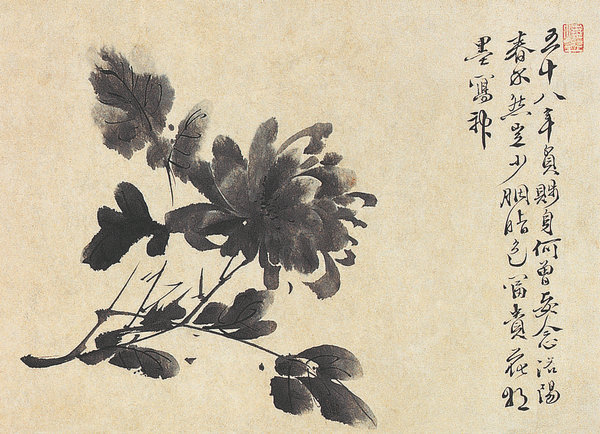

"He splashed and shaded ink on paper as if he were throwing a shower of storms and gales," Wu says. He adds that it is an eruption of emotions and melancholy, reflecting the romanticism movement, with Xu being a representative figure of it in various areas of art, literature and philosophy.
Decades later, the monk-artist Zhu Da took the baton of xieyi to leverage it to an even higher expressive realm. His paintings are known for delivering an enigmatic mood — he often painted fish, birds, deer and cranes with upturned eyes, raising their heads toward the sky.
A member of the fallen Ming royal family, he secluded himself from the hustle of the Qing Dynasty (1644-1911). "There is symbolism manifested by his bold outlines and the animals, sometimes alone on a tree branch or a cliff rock. Underneath the minimalist beauty of his works is sorrow, loneliness and a compassion for the lives that suffered — a portrayal of his own experience and mentality," Wu says.